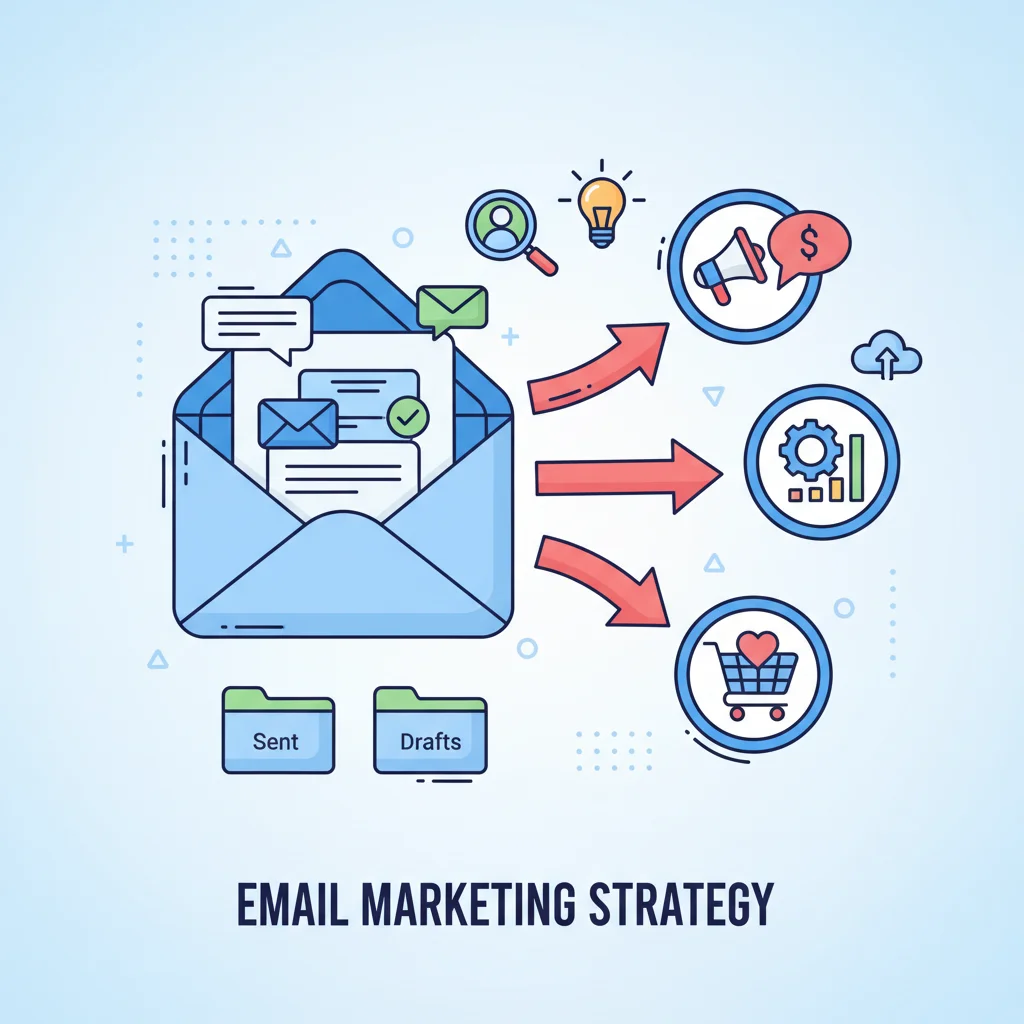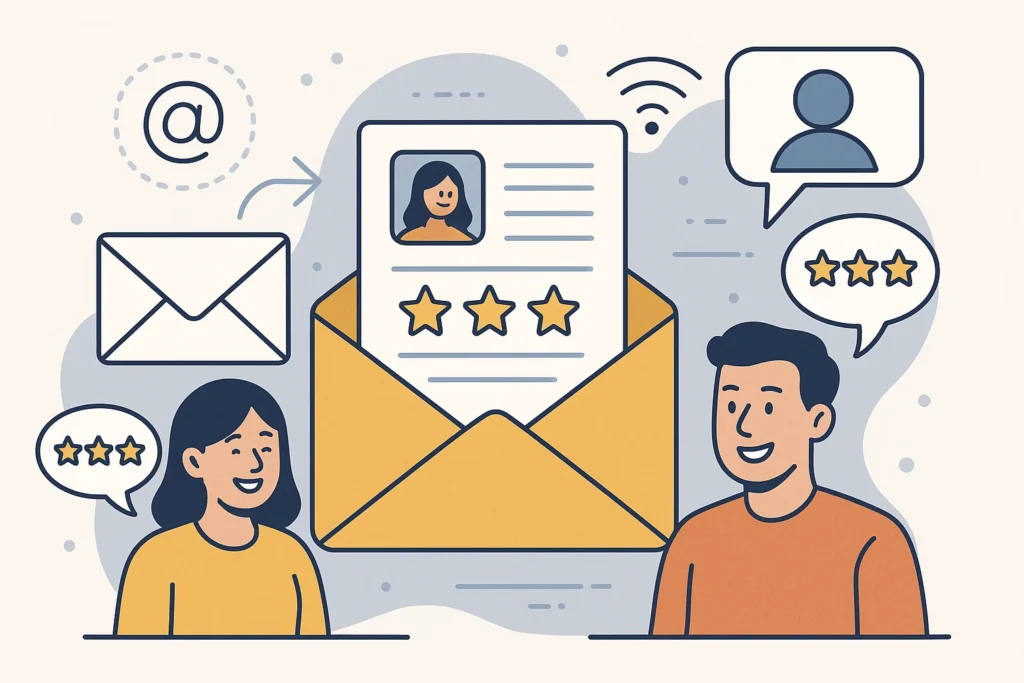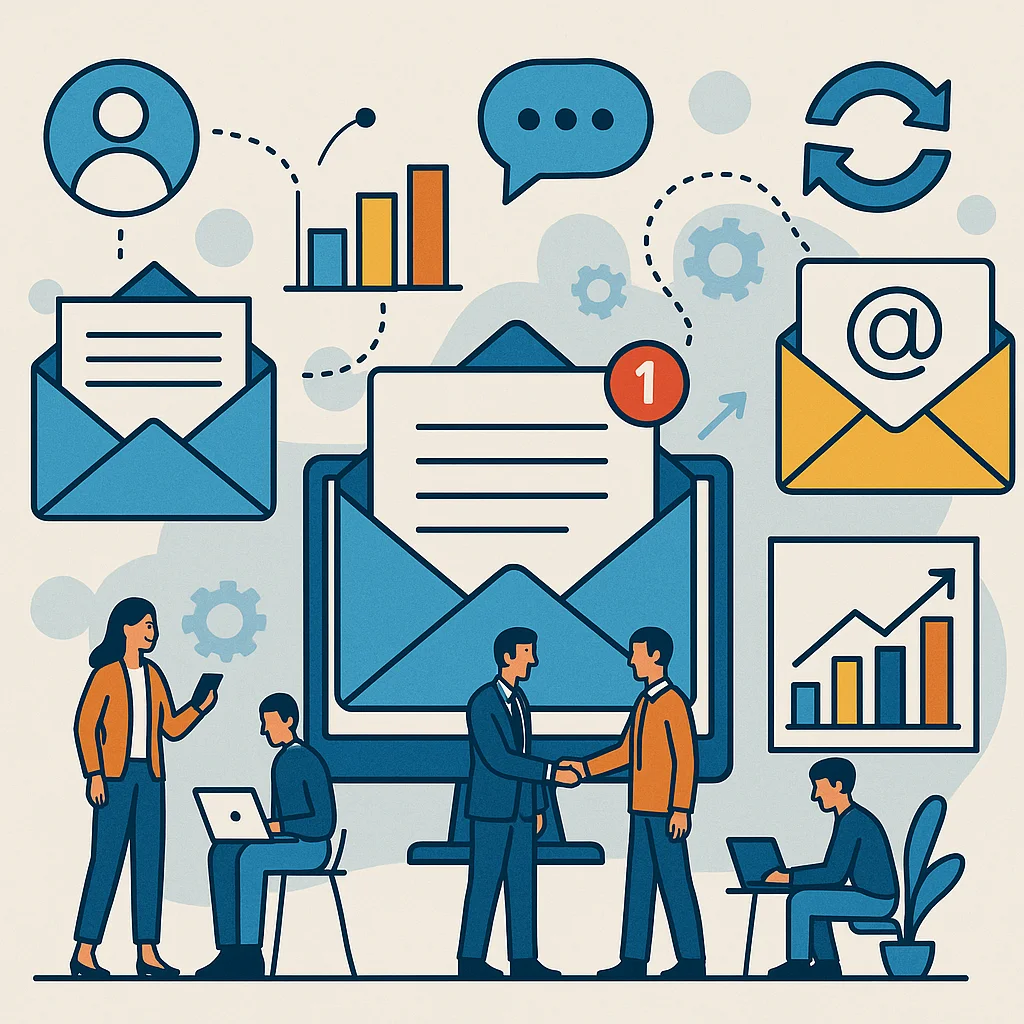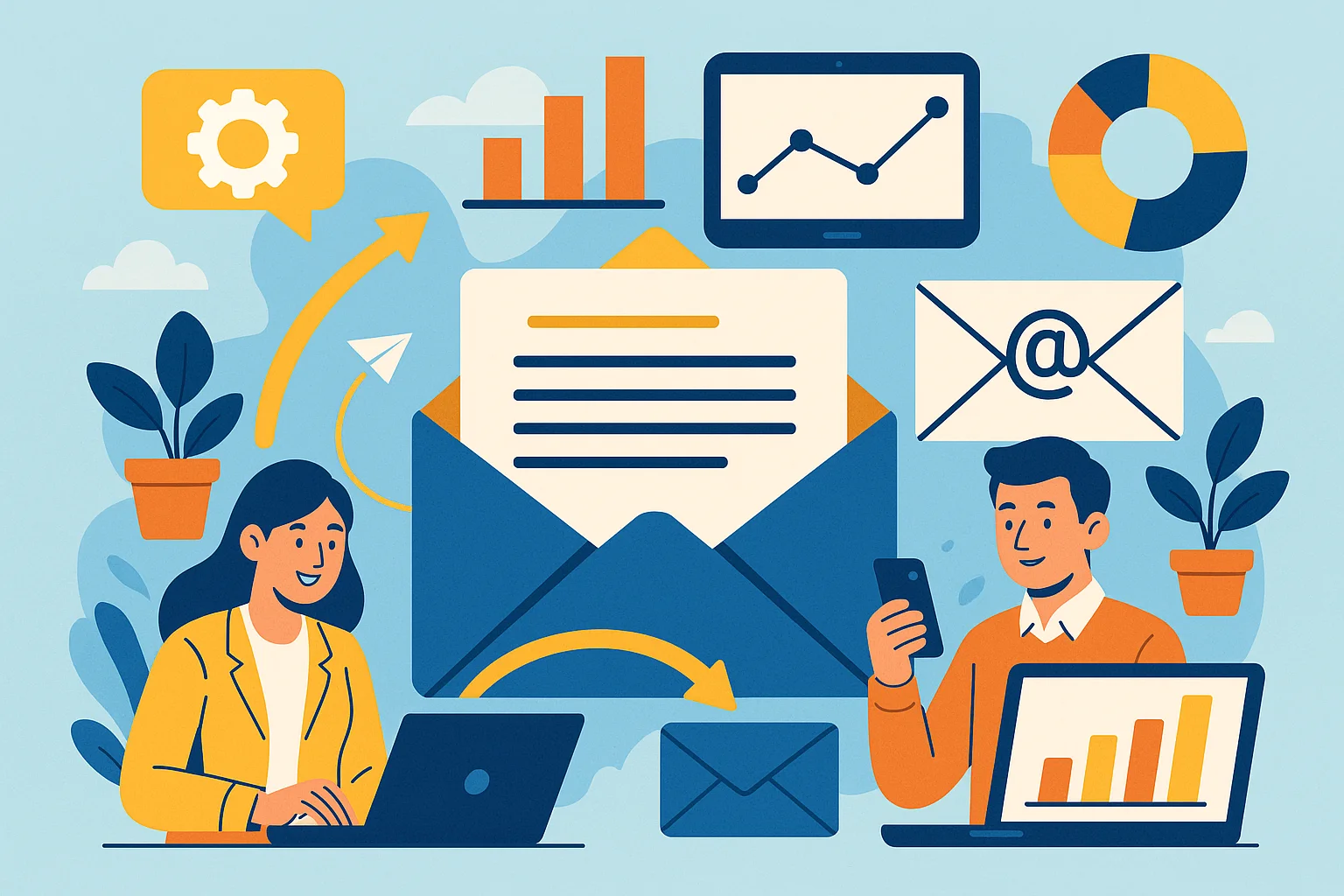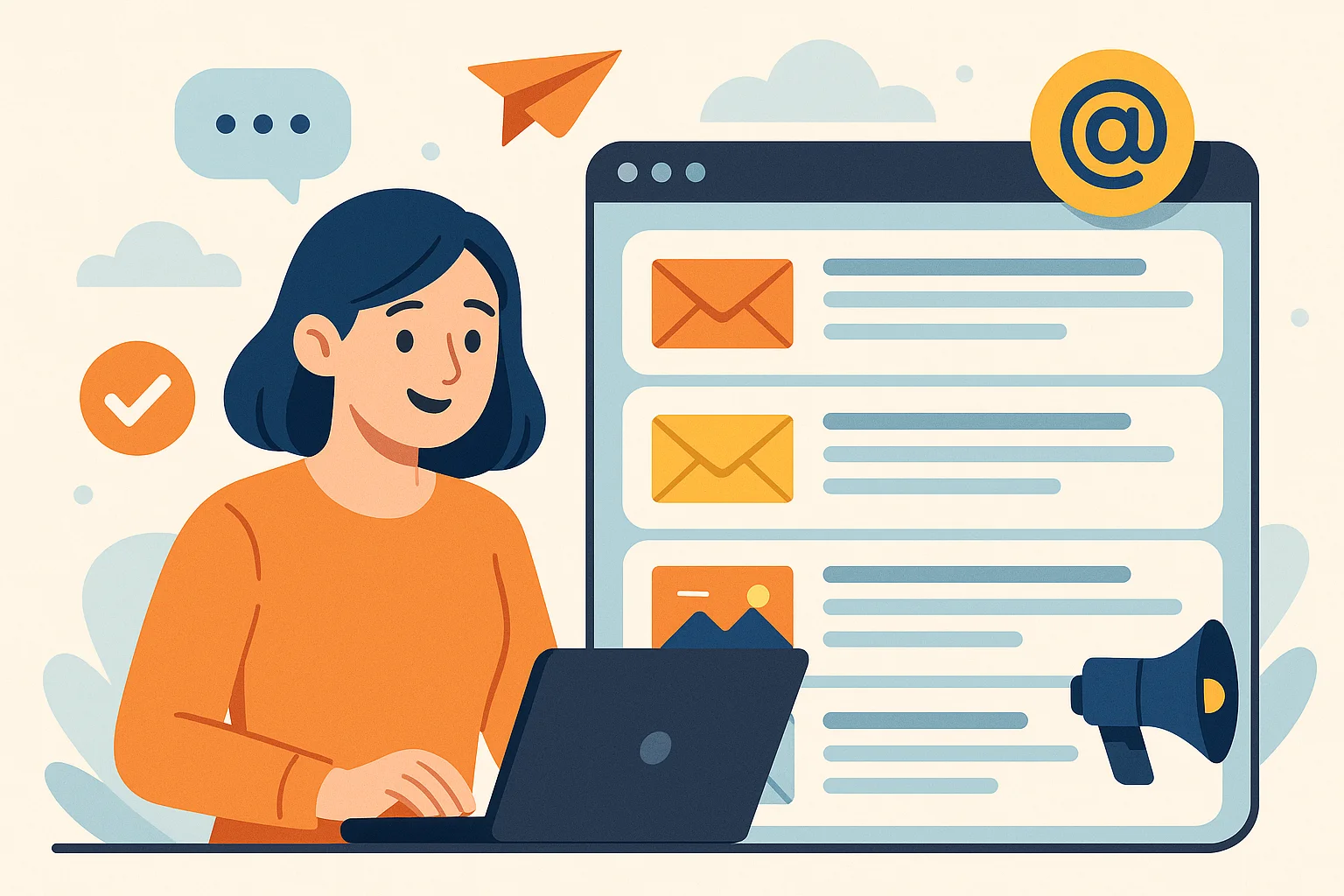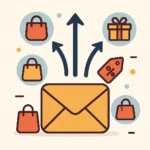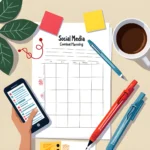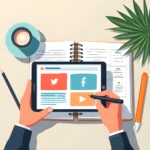Now Reading: Email Marketing for Customer Onboarding That Actually Converts
-
01
Email Marketing for Customer Onboarding That Actually Converts
Email Marketing for Customer Onboarding That Actually Converts

Ever watched a new customer sign up for your product… only to disappear forever? That sinking feeling in your stomach isn’t just disappointment – it’s lost revenue walking out the door. Without proper onboarding, even excited customers get confused, frustrated, and eventually ghost you. But here’s the good news: email marketing for customer onboarding can transform those vanishing acts into success stories. And today I’m sharing exactly how you can do it.
Key Takeaways
How to use email marketing for customer onboarding:
- Create a welcome sequence that introduces your brand and sets clear expectations for what’s coming next
- Segment your audience based on behavior, needs, and goals to deliver personalized onboarding experiences
- Focus on benefits over features to help users understand the value your product brings to their lives
- Use behavior-triggered emails that respond to user actions (or inaction) with relevant guidance
- Include clear CTAs in every email that direct users toward their next meaningful action
- Keep emails mobile-friendly with responsive design and concise messaging
What Is Customer Onboarding And Why Does It Matter?
Customer onboarding is basically the process of getting your new users or customers comfortable with your product or service. Think of it like welcoming someone into your home – you don’t just open the door and walk away. You show them around, tell them where things are, and make sure they feel comfortable.
In the digital world, good onboarding means guiding customers from “I just signed up” to “I can’t live without this product.” And email marketing for customer onboarding is one of the most powerful tools to make this happen.
Let’s get real for a second. When customers don’t properly onboard, they leave. And acquiring a new customer costs anywhere from 5 to 25 times more than keeping an existing one. Yikes.
Here’s what happens with bad onboarding:
- Users get confused and frustrated
- They don’t experience your product’s value
- They stop using your product entirely
- They tell others about their negative experience
- Your churn rate skyrockets
On the flip side, effective email marketing for customer onboarding can boost retention by up to 50% and increase customer lifetime value dramatically. That’s why it’s worth getting right.
Useful Articles:
Planning Your Onboarding Email Strategy
Before you write a single email, you need a solid plan. Here’s how to create one:
Define your onboarding goals
What exactly do you want new customers to accomplish? Your goals might include:
- Getting users to complete their profile setup
- Encouraging them to use a core feature for the first time
- Helping them achieve their first “win” with your product
- Converting free trial users to paid customers
Be specific about what success looks like. For example, “User completes first project within 3 days” is better than “User engages with platform.”
Map the customer journey
Understanding the typical path your customers take helps you create relevant emails. Consider:
- What actions do successful customers take first?
- Where do most users get stuck or confused?
- What features do your power users love that newbies often miss?
- What questions do new customers frequently ask?
This journey map becomes your blueprint for creating targeted emails that arrive at exactly the right moment.
Segment your audience
Not all customers are the same, and your onboarding shouldn’t be either. Segment based on:
- How they found you (referral, organic search, paid ad)
- Their role or job title
- Company size or industry
- Goals they selected during signup
- Actions they’ve taken (or haven’t taken)
Each segment might need slightly different guidance to reach their “aha moment” with your product.
Creating Your Onboarding Email Sequence
Now for the fun part – actually creating your emails! Let’s break down the essential types of emails in an effective onboarding sequence.
The welcome email
Your welcome email is like a first impression – you only get one shot. It should:
- Thank the customer for signing up
- Restate your value proposition (remind them why they signed up)
- Set clear expectations for what’s coming next
- Include ONE clear call-to-action for their next step
Keep it short, friendly, and focused. According to data, welcome emails have an average open rate of 63.91%, making them your most valuable email real estate.
Here’s a quick template:
Subject: Welcome to [Brand] - Let's get started!
Hi [Name],
Welcome to the [Brand] family! I'm thrilled you've joined us.
You're now just minutes away from [core benefit of your product].
To get started:
1. [First simple action they should take]
If you have any questions, just hit reply - I'm here to help!
[Your name]The getting started email
This email should arrive 1-2 days after signup and focus on helping users complete initial setup. Include:
- Step-by-step instructions (with screenshots if helpful)
- Estimated time to complete setup (keep it short!)
- Benefits they’ll gain once setup is complete
The key is making this process feel easy and worthwhile. No one wants to spend 30 minutes on setup without understanding the payoff.
The feature highlight email
Don’t overwhelm new users by explaining every feature at once. Instead, spotlight 1-3 core features that deliver immediate value. For each feature:
- Explain what it does in simple terms
- Show how to access and use it (visuals help!)
- Describe the benefit it provides
Remember to focus more on benefits than features. People don’t care about your “proprietary analytics dashboard” – they care about “seeing exactly which marketing channels drive sales.”
The behavior-triggered email
These are my secret weapon for effective onboarding. Unlike time-based emails, behavior-triggered emails respond to user actions (or inaction).
Examples include:
- “Congrats on your first [milestone]!” emails
- “We noticed you haven’t…” emails for inactive users
- “Ready for the next step?” emails when they complete a task
These feel incredibly personalized because they’re based on the user’s actual experience with your product.
The social proof email
Sometimes customers need reassurance they made the right choice. Share:
- Customer success stories
- Testimonials from similar users
- Data about your customer satisfaction
- Tips from power users
This builds confidence and gives new users models to follow.
The feedback request email
After users have had time to explore your product (usually 7-14 days), ask for feedback. This:
- Shows you value their opinion
- Provides valuable insights for improvement
- Identifies at-risk customers so you can help them
- Makes customers feel invested in your product’s success
Keep it simple with 1-3 questions or a quick rating system.
Useful Articles:
Best Practices For Onboarding Emails That Convert
Now that you know the types of emails to send, let’s talk about how to make them effective.
Write catchy subject lines
Your subject line determines whether your carefully crafted email gets opened or ignored. Some winning approaches:
- Ask a question: “Ready to see what [Product] can really do?”
- Create urgency: “Your [Product] trial ends in 3 days – don’t miss this!”
- Show value: “3 minutes to set up, hours of time saved”
- Use numbers: “5 [Product] features most users miss”
- Keep it personal: “[Name], your next step awaits”
Keep subject lines under 60 characters to ensure they display properly on mobile devices.
Focus on benefits, not features
This is so important I’m saying it again. Don’t tell users about your “customizable dashboard widgets” – tell them how they can “see exactly what matters most at a glance.”
Every feature you mention should be connected to a clear benefit that answers the customer’s question: “What’s in it for me?”
Keep it concise and scannable
No one reads long emails anymore – they scan them. Make your emails easy to digest by:
- Using short paragraphs (2-3 sentences max)
- Including plenty of white space
- Using bullet points for lists
- Bolding key information
- Including subheadings for longer emails
- Making your CTA button stand out visually
The easier your email is to scan, the more likely your message will land.
Personalize beyond “[First Name]”
Basic personalization isn’t enough anymore. Take it further by:
- Referencing specific actions they’ve taken
- Mentioning their industry or use case
- Tailoring recommendations based on their behavior
- Adjusting tone based on their engagement level
The more relevant your email feels, the more likely they’ll engage with it.
Include one clear CTA per email
Every onboarding email should direct the user toward a specific next action. Including multiple CTAs creates decision paralysis and reduces the likelihood they’ll take any action at all.
Make your primary CTA:
- Visually distinct (button > text link)
- Action-oriented (“Start your first project” > “Click here”)
- Benefit-focused (“Get your free report” > “Download”)
- Positioned prominently (above the fold if possible)
If you absolutely must include secondary options, make them visually less prominent than your main CTA.
Email marketing for customer onboarding doesn’t have to be complicated. Start with a clear understanding of your users’ journey, create emails that guide them toward value, and continuously refine based on what works. The most effective onboarding sequences feel less like a corporate process and more like a helpful friend showing you around. So go ahead – write that first welcome email, and watch your customer activation and retention soar!


